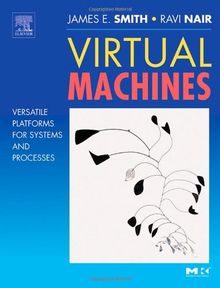
Virtual machines are rapidly becoming an essential element in providing system security, flexibility, cross-platform compatibility, reliability, and resource efficiency. Designed to solve problems in combining and using major computer system components, virtual machine technologies are important to a number of disciplines, including operating systems, programming languages, and computer architecture. For example, at the process level, virtualizing technologies support dynamic program translation and platform-independent network computing. At the system level, they support multiple operating system environments on the same hardware platform and in servers. Historically, individual virtual machine techniques have been developed within the specific disciplines that employ them (in some cases they aren't even referred to as "virtual machines"), making it difficult to see their common underlying relationships in a cohesive way. In this text, Smith and Nair take a new approach by examining virtual machines as a unified discipline. Pulling together cross-cutting technologies allows virtual machine implementations to be studied and engineered in a well-structured manner. Topics include instruction set emulation, dynamic program translation and optimization, high level virtual machines (including Java and CLI), and system virtual machines for both single-user systems and servers.